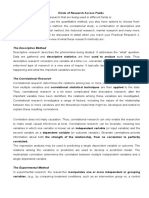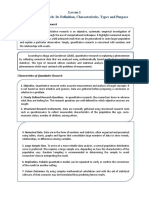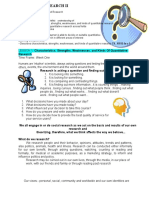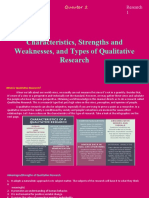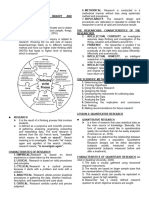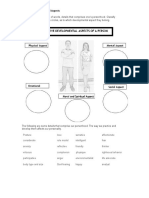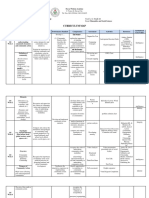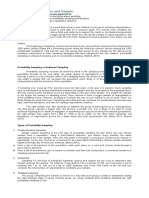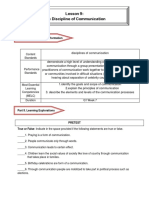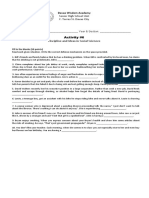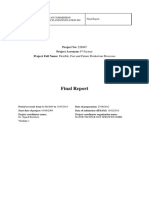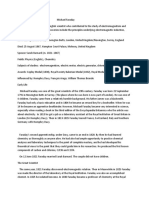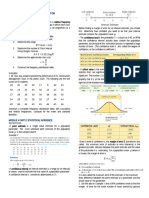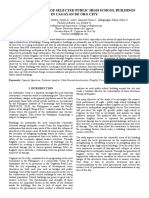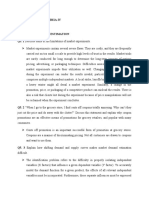0% found this document useful (0 votes)
38 views5 pagesPR1 Lesson 4
The document discusses the differences between quantitative and qualitative research methods. Quantitative research aims to quantify data through things like surveys and experiments to test hypotheses and find statistical relationships, while qualitative research uses non-statistical methods like interviews and observations to understand human behaviors and emerging themes.
Uploaded by
cindy juntongCopyright
© © All Rights Reserved
We take content rights seriously. If you suspect this is your content, claim it here.
Available Formats
Download as DOCX, PDF, TXT or read online on Scribd
0% found this document useful (0 votes)
38 views5 pagesPR1 Lesson 4
The document discusses the differences between quantitative and qualitative research methods. Quantitative research aims to quantify data through things like surveys and experiments to test hypotheses and find statistical relationships, while qualitative research uses non-statistical methods like interviews and observations to understand human behaviors and emerging themes.
Uploaded by
cindy juntongCopyright
© © All Rights Reserved
We take content rights seriously. If you suspect this is your content, claim it here.
Available Formats
Download as DOCX, PDF, TXT or read online on Scribd
/ 5





